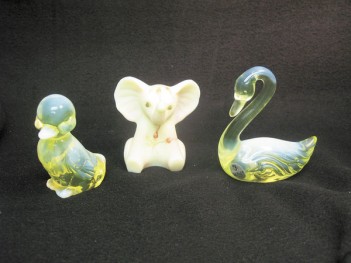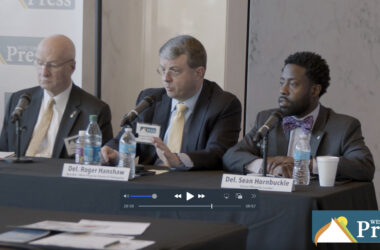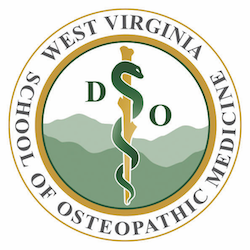
All three Fenton Art Glass pieces shown use uranium dioxide in their coloring: the birds are examples of uranium glass while the elephant is an example of Burmese glass.
PARKERSBURG, W.Va. — The Wood County Board of Education has not been the only group interested in Fenton Art Glass Inc.
The board of education has spent $60,000 as of July 12 exploring a property adjacent to Fenton Art Glass as a possible site for a new Williamstown Elementary School. Preliminary soil samples say the area is clean, but the board is waiting on the water sample results.
Fenton Art Glass is located at 700 Elizabeth St, Williamstown, where the facility is in the process of decommissioning through the Nuclear Regulatory Commission, according to public documents from the commission’s online A.D.A.M.S. database.
Fenton Art Glass was well-known for its glass-working techniques and the many colors it produced, some of which used uranium 238, which is radioactive. Fenton Art Glass had to be licensed through the United States Nuclear Regulatory Commission to use the radioactive material.
Uranium glass, otherwise known as Vaseline glass, is a term for the transparent yellow to yellow-green glass that owes its color to its uranium content. This type of glass is most noticeable under ultraviolet light, where it glows bright green. To produce this type of coloring, each piece has about 2 percent uranium dioxide in its makeup, according to an article by Michelle Alice titled ‘Collectors Corner: Uranium” in the Spring 2013 issue of the Ohio University Radiation Safety Office Newsletter.
Uranium was first used to color glass in the 1830s and it has continued to be used for this purpose with the exception of a 15-year period beginning in 1943. Prior to World War II, natural uranium was used, but when Vaseline glass production resumed in 1958, the switch was made to depleted uranium as regulations on uranium were no longer in effect, according to the Oak Ridge Associated Universities’ online article entitled ‘Vaseline and Uranium Glass (ca. 1930s).’
Another type of glass produced by Fenton Art Glass, Burmese, also incorporates uranium dioxide. Burmese glass is a type of opaque glass that fades from yellow to pink. Uranium dioxide is combined with a tint of gold to produce the soft yellow of the glass. The pink blush color is then made by reheating the glass in the furnace.
Jade glass, some shades of Carnival glass and some Depression glass pieces also have uranium dioxide content in their coloring, according to Alice.
While the length of time that Fenton Art Glass has been using uranium and depleted uranium is unverified, the NRC sent a letter in 2007 to Michelle Beardsley of Fenton stating that their inventory of depleted uranium oxide must not exceed 10 millicuries, 28 kilograms, beginning in February 2007, according to the A.D.A.M.S. database.
In August 2010, Todd Jackson of the NRC conducted a safety inspection and Fenton was found in violation. Three safety violations were reported: possession of depleted uranium oxide in excess of the authorized limit; failure to perform the required periodic review of the radiation protection program; and failure to commit annual training for staff who had previously completed the “Safety Program for Radioactive Materials.”
After addressing their compliance issues, Fenton Art Glass was able to go many years without receiving violations or fines from the NRC. It was not until 2015 that the NRC became actively involved with the Fenton site once again. The year signaled the expiration of their license with the NRC, meaning that George Fenton, President and CEO of Fenton Art Glass, would have to reapply or go through a license termination and decommissioning process.
Fenton decided to apply to the NRC for Fenton Art Glass to have its license terminated. To do this, the company must develop a final status survey plan to survey and analyze the factory property for nuclear emissions, get that plan approved, execute the survey plan and the NRC must sign off on the results. The company in question is in charge of developing and submitting the survey plan for approval, something that can become a lengthy process if protocol is not followed and survey requirements are not understood.
“I stated that the survey that was submitted did not appear to show that the area could be released and meet requirements. It actually showed areas where it appeared that the location did not meet requirements,” said Dennis Lawyer, health physicist with the NRC’s Division of Nuclear Material Safety, in a telephone conversation record in the A.D.A.M.S. database dated Nov. 24. “I then discussed the screening level of uranium. I suggested that, with his permission, I talk to his consultants about survey requirements. Mr. Fenton did not believe me that the location was not ready for release, in which I stated that I did not know that it wasn’t ready for release, but I can’t conclude that with the survey submitted.”
In May 2016, Lawyer and Fenton discussed another issue for concern.
“I had a conference call with Mr. Fenton’s consultant and Mr. Fenton about the survey plan,” said Lawyer in a separate phone conversation record dated May 26. “Key areas discussed (were) that I am not authorized to release construction debris and it would need a separate submittal.”
No documents have been filed with the NRC in regard to construction debris. The results of the survey will determine if the debris can be removed without filing paperwork or if a special request must be made to remove them, according to Fenton.
“As we go through this process we are depending on professionals in the field to guide us through this process,” said Fenton. “We are very impressed with their thoroughness.”
After many months of back-and-forth between the NRC and Fenton, and a change of consulting firms from MSES Consultants to Plexus Scientific Corporation, the Final Status Survey Plan was approved on June 7. According to the plan, which was filed in the A.D.A.M.S. database, “the date for completion of the Decommissioning project is to be determined but is expected to be before July 31, 2016.” These results will then be delivered to the NRC who will review them and decide if the Fenton factory site meets the decommissionings requirements.
“We don’t have final reports yet but preliminary results look good,” said Fenton about the ongoing survey. “We’re making sure that everything is proper so there are no concerns and going through it step by step. I think that the site is a very good one for an elementary school.”
George Fenton took people from the Brownfields Assistance Center around the property and through the Fenton archives on Feb. 18, 2015, to determine if anything looked hazardous and if environmental agencies would need to be consulted, according to Patrick Kirby, director of the Northern West Virginia Brownfields Assistance Center at West Virginia University.
The Brownfield Revitalization and Restoration Act, passed in 2002 under the Bush administration, defines a brownfield site as a property which may be “complicated by the presence or potential presence of a hazardous substance.”
“There is no presumed cleanup; there was nothing wrong with the property,” said Kirby. “It would be great if it were incredibly active. If there are other people interested, you don’t want them to be afraid.”
Kirby made it clear that, although they did inspect the Fenton factory site, there was nothing they came across that would force the site to go through a Brownfield cleanup program. The Brownfield Assistance Center was consulted so that Fenton could go through the proper channels and environmental agencies to either clean up or decommission the site.
Fenton Art Glass was started in 1905 in a rented space in Martins Ferry, Ohio by John W. Fenton and Frank L. Fenton. The Fenton factory in Williamstown was built in 1906, becoming the permanent home for the company. For the next 100 years, Fenton continued to grow and adapt, developing new colors and staying in business through the Great Depression and various wars.
Fenton Art Glass began an attempt at restructuring in June 2007, until in July 2011 Fenton Art Glass had to cease traditional glassmaking and focus solely on being a jewelry making operation while continuing to sell inventory out of their gift shop and give tours of their museum.
After closing its museum and plant in 2013, Fenton held auctions of glass that were left in Fenton’s inventory. The last auction was held in July 2014.
To read more from the Parkersburg News and Sentinel, subscribe here.






